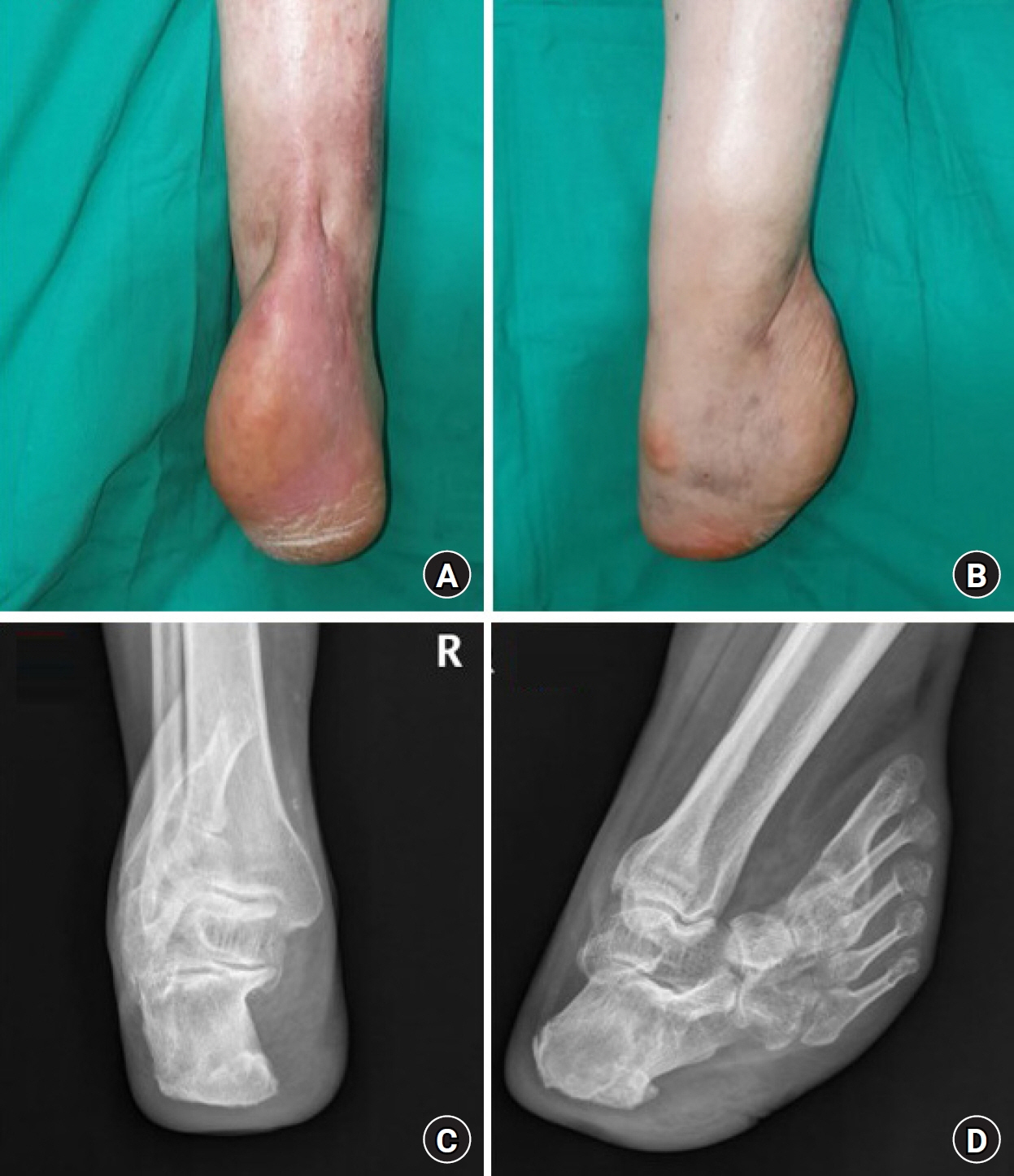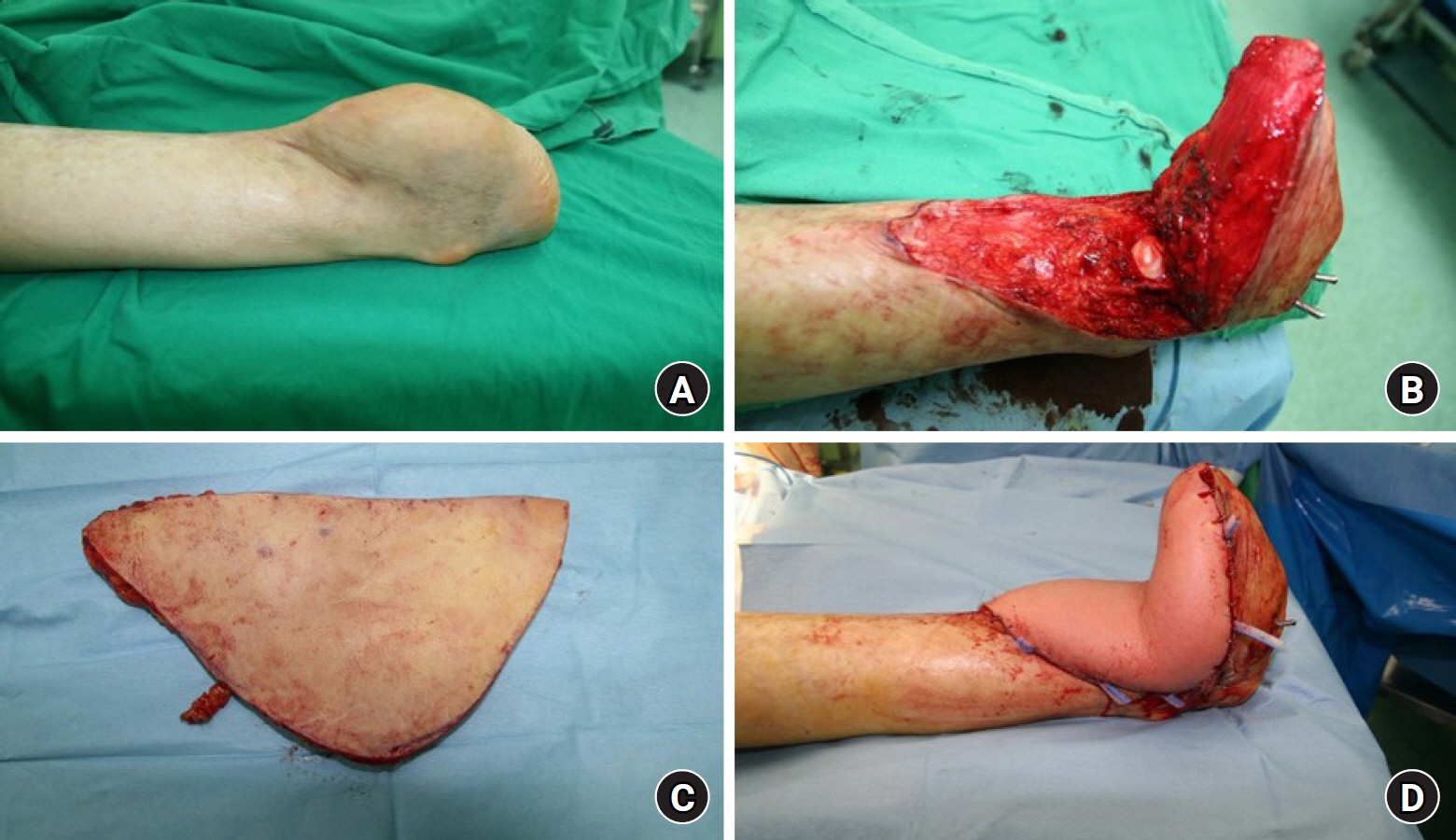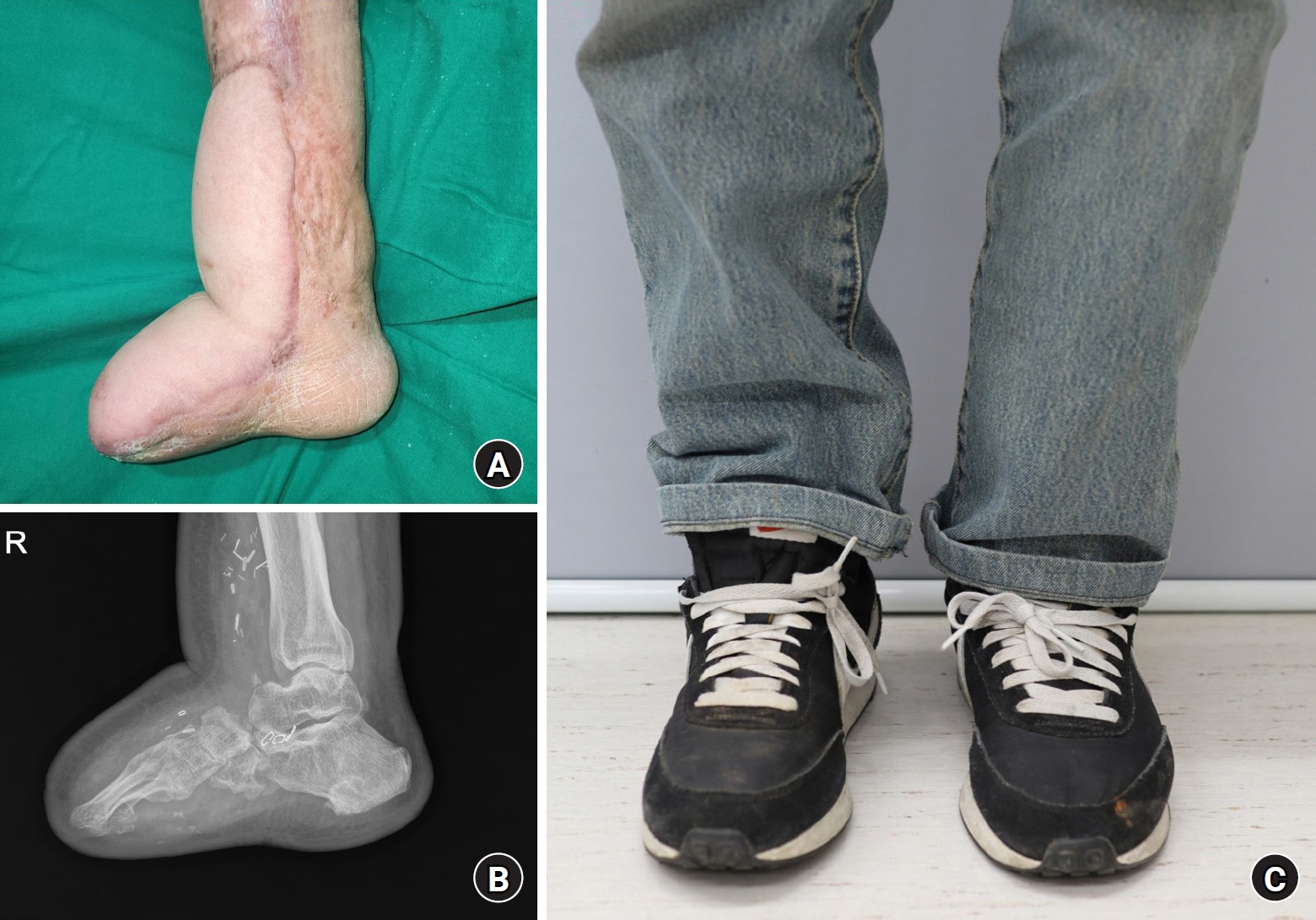Arch Hand Microsurg.
2023 Sep;28(3):194-198. 10.12790/ahm.23.0012.
Reconstruction of extreme post-burn scar contracture of the ankle using a thoracodorsal artery perforator flap: a case report
- Affiliations
-
- 1Department of Plastic and Reconstructive Surgery, Hanyang University College of Medicine, Seoul, Korea
- KMID: 2545530
- DOI: http://doi.org/10.12790/ahm.23.0012
Abstract
- Post-burn scar contracture associated with deep second-degree or higher burns in the joint area can lead to joint immobility and may cause chronic ulcers, substantially impacting patients’ quality of life. Surgical intervention is necessary, with local flaps or skin grafts being the first option. In extreme cases, free flap transfer may be required to address large defects that occur after contracture release. This study presents a successful case of reconstruction using free flap transfer in a patient with severe post-burn scar contracture, which resulted in a club-like deformed ankle with a nonfunctional joint. Despite the extreme deformity and nonfunctioning joint, we utilized a thoracodorsal artery perforator flap to stably cover the newly fused joint in a neutral position. After reconstruction, the patient was able to wear shoes and ambulate. This case highlights the potential of free flap transfer even in the most challenging situations where joint function is severely compromised.
Keyword
Figure
Reference
-
References
1. Mani MM, Chhatre M. Reconstruction of the burned lower extremity. Clin Plast Surg. 1992; 19:693–703.
Article2. Riaz HM, Mehmood Bhatti Z. Quality of life in adults with lower limb burn injury. J Burn Care Res. 2020; 41:1212–5.
Article3. Hendriks TCC, Botman M, de Haas LEM, et al. Burn scar contracture release surgery effectively improves functional range of motion, disability and quality of life: a pre/post cohort study with long-term follow-up in a low- and middle-income country. Burns. 2021; 47:1285–94.
Article4. Chang LS, Kim YH, Kim SW. Reconstruction of burn scar contracture deformity of the extremities using thin thoracodorsal artery perforator free flaps. ANZ J Surg. 2021; 91:E578–83.
Article5. Stekelenburg CM, Marck RE, Tuinebreijer WE, de Vet HC, Ogawa R, van Zuijlen PP. A systematic review on burn scar contracture treatment: searching for evidence. J Burn Care Res. 2015; 36:e153–61.6. Stekelenburg CM, Jaspers ME, Jongen SJ, et al. Perforator-based interposition flaps perform better than full-thickness grafts for the release of burn scar contractures: a multicenter randomized controlled trial. Plast Reconstr Surg. 2017; 139:501e–509e.
Article7. Kim JT, Ng SW, Naidu S, Kim JD, Kim YH. Lateral thoracic perforator flap: additional perforator flap option from the lateral thoracic region. J Plast Reconstr Aesthet Surg. 2011; 64:1596–602.8. Kim SW, Youn S, Kim JD, Kim JT, Hwang KT, Kim YH. Reconstruction of extensive lower limb defects with thoracodorsal axis chimeric flaps. Plast Reconstr Surg. 2013; 132:470–9.
Article
- Full Text Links
- Actions
-
Cited
- CITED
-
- Close
- Share
- Similar articles
-
- Reconstruction of the Soft Tissue Defect Using Thoracodorsal Artery Perforator Skin Flap
- Reconstruction of a Breast Burn Scar Using a Deep Inferior Epigastric Perforator Flap: A Case Report
- Reconstruction of Burn Scar Contracture with Split-Thickness Skin Graft Taken from the Scalp and Alloderm(R): Case Report
- The treatment of axillary hidradenitis suppurativa with a thoracodorsal artery perforator V-Y advancement flap: a case report
- Staged Treatment of an Extensive Post-Burn Scar Contracture with Chronic Ulceration of the Knee Joint: A Case Report





